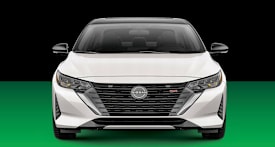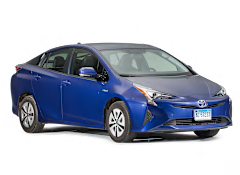
As battery range goes up and prices go down, more consumers are considering an electric vehicle. And a lot more choices are coming from carmakers. But a switch from gasoline power is an adjustment that raises questions, as we routinely receive from our members.
In this electric vehicle FAQ, Consumer Reports addresses many of the recent questions we have received.
• Are EVs More or Less Reliable Than Cars With Internal Combustion Engines?
• Do Batteries in EVs Wear Out Over Time the Way They Do in Smartphones?
• How Much Does It Cost to Charge an EV?
• Are There Enough Charging Stations to Go Around?
• What Are the Options for Charging an EV at Home?
• Do Cold Temperatures and Steep Inclines Reduce Vehicle Range?
• Will an EV Die in Stop-and-Go Traffic?
• My Car Wash Often Posts a Sign Saying It Doesn't Wash Teslas. What's Up With That?
• What EV Choices Are There Right Now—and Will There Be More Soon?
Are EVs More or Less Reliable Than Cars With Internal Combustion Engines?
A: EVs are generally more mechanically reliable than gasoline models because there are fewer parts, according to Jake Fisher, CR's senior director of auto testing. There's no engine or conventional transmission, which are complicated parts of a traditional car. When EVs are unreliable, it's generally not the batteries or electric motors causing problems; it's the doors, infotainment systems, or window buttons.
The best way to avoid an unreliable EV is to avoid car manufacturers that produce unreliable cars, Fisher says. For example, the Chevy Bolt EV has had average reliability, not unlike some other Chevrolet models. Tesla models have ping-ponged between average and below-average reliability over time. A major complaint about Tesla's consistently unreliable Model X involves problems with its unconventional falcon-wing doors. On the other end, the Toyota Prius Prime and Honda Clarity have registered the highest predicted reliability ratings for vehicles that plug in, according to CR's member surveys.
Do Batteries in EVs Wear Out Over Time the Way They Do in Smartphones?
A: Jake Fisher, CR's senior director of auto testing, says that generally speaking, EV (and hybrid) batteries have been longer-lasting, with better performance, than many people predicted years ago. "Despite loss of some range over their lifetimes, they'll be more than functional for a long time," he says.
Expect EV batteries to lose about 2.3 percent of their starting range per year, according to Geotab, a transportation technology services company in Oakville, Ontario, that analyzed data from 6,300 real-world EVs. For a Nissan Leaf starting with 149 miles of range, that would be reduced after 5 years to about 132 miles. A Tesla Model 3 with 250 miles of range would have a maximum range of 221 miles after 5 years, or about 88 percent. After 10 years, the Model 3 would have 192 miles of range, and after 15 years, it would get 164 miles on a charge, about two-thirds of its original range. Owners can accept this limitation or buy a replacement battery. Nissan, for example, charges more than $12,000, but recently the company has offered a refurbished battery pack in Japan for less than $3,000. CR says cheaper refurbished battery packs are a sensible choice if your EV is 10 years old or more.
Be aware that frequent use of DC fast chargers can degrade range faster. Draining the battery to zero or frequently charging to 100 percent also can hurt range over time. Geotab recommends that EV owners maintain a charge of 20 to 80 percent. (EV panel displays give real-time range estimates.)
How Much Does It Cost to Charge an EV?
A: Generally speaking, EV drivers tend to save about 50 percent on fuel costs compared with gasoline models. Based on national averages, they can expect to pay about 3 to 4 cents per mile compared with 5 to 30 cents for gasoline, says Ronald Kaltenbaugh, president of the Electric Vehicle Association of Greater Washington, D.C. A typical gas-powered vehicle, such as the Toyota RAV4, would use about 3⅓ gallons of gas to go 100 miles. If gas costs $2.54 per gallon (the average price in the U.S. during one week in January, according to AAA), the Toyota owner would spend $8.47 to go 100 miles. Assuming that EV energy costs are 11 cents per kilowatt hour, and that it takes 34 kWh to generate 100 miles of driving range, the cost of home charging is less than half the price of gasoline, according to the Department of Energy.
Of course, prices depend on where you plug in and local electricity rates. Consumers can usually save even more by charging at home overnight because of lower off-peak rates. Public charging prices vary depending on location because utilities differ in prices and regulations. According to 2018 data, average retail prices for home electricity were under 10 cents per kWh in Louisiana and more than 30 cents in Hawaii. Tesla currently offers unlimited free Supercharger use for the Model S and Model X for the original owner. Model 3 owners pay the going rate of 26 cents per kWh, or about $8.84 for 100 miles of range. For your state's costs, go to energy.gov/maps/egallon, and also check for special utility rate plans.
Are There Enough Charging Stations to Go Around?
A: Tesla, with about 80 percent of the U.S. EV market, has an extensive Supercharger network: 762 stations in 47 states, and expected to grow to 1,130 stations in every state soon. Most stations have multiple chargers, but these work only for Teslas. For other EVs, companies such as ChargePoint, EVgo, and Electrify America are continuing to build their own national networks along highways and other high-trafficked areas. (Tesla owners can buy adapters so that their vehicles will also work on non-Tesla chargers.) ChargePoint has more than 108,000 chargers. EVgo has more than 1,200 high-speed chargers nationwide. The Department of Energy estimates that there are nearly 30,000 charging stations, most with multiple chargers, across the U.S. and Canada.
To assess the charging experience and availability, Consumer Reports drove to public charging stations along the Interstate 91 corridor in Connecticut, a busy stretch near our Auto Test Center that's filled with commuters and long-distance drivers. Our experience using the chargers was mostly positive. At the 55 stations we visited, representing 141 chargers (an average of more than two chargers per station), all but four chargers were in good working order. A majority of stations had at least one available port, so we didn't have to wait.
Most charging is still done at home (more than 80 percent), often overnight. "If people have a place to plug in, that's the cheapest and most convenient option," says Shannon Baker-Branstetter, manager of cars and energy policy at Consumer Reports in Washington, D.C. Standard 110-volt home charging, called Level 1, can take 17 to 25 hours to add 100 miles of driving range, according to ChargePoint. At-home 240-volt charging, called Level 2, uses plugs that fit heavy-duty appliance outlets, such as those for a dryer, and can add 100 miles of range in 4 to 5 hours. DC fast chargers, found at some public charging stations, can add 100 miles in just over 30 minutes. For longer trips, we recommend that drivers check the PlugShare and Electrify America apps, which have trip planning tools. PlugShare also has user reviews so that drivers can tell whether certain public charging stations tend to be crowded.
Inclines Reduce Vehicle Range?
Cold temperatures can indeed reduce the range of EVs. That's partly due to battery chemistry; the energy-producing reactions in batteries don't work as well in cold weather. In tests that CR conducted last year, outdoor temperatures between 0° F and 10° F reduced the range of a Tesla Model 3 and a Nissan Leaf by about 50 percent from their advertised maximum range on a full charge. (Extreme heat also can take a toll.)
EV owners can mitigate some of this temperature-related loss by parking in a garage that's at least partly heated. Owner's manuals may have specific instructions for this, such as running the climate control system while the vehicle is charging.
In that way, the power will be coming straight from the power grid rather than the battery.
Having the heat on in an EV cabin also can cause a significant battery drain.
You can help conserve the battery charge in cold weather by selecting a lower climate control temperature for the cabin, say, 66° F instead of 74° F, and relying on seat heaters and heated steering wheels for comfort.
As for steep inclines, all vehicles work harder when going uphill. But in an EV, some of that lost charge is restored when going downhill through regenerative braking, the technology that converts the energy of a car's moving wheels into electricity. Aggressive driving or long stretches of fast driving (more than 70 mph) also can deplete a battery faster.
As with gas-powered cars, EVs let the driver know when power is getting low. We advise always factoring in a safety margin, such as a quarter charge, so you have latitude to deal with an unexpected emergency errand or unavailable charger.
What Are the Options for Charging an EV at Home?
A: If you live in a house with a garage, there are three options for at-home charging:
1. Plug into a regular 110-volt wall outlet. This is the cheapest option but also the slowest, sometimes requiring an entire day to fully charge a battery. An overnight charge, however, can generally give 40 to 50 miles of range (if not more), enough for most daily commutes. It's always a good idea to use the cord that comes with the car or another well-insulated, heavy-duty extension cord, the kind you would use for a major appliance or for outdoor power equipment.
2. Plug the EV into a regular 240-volt outlet, the same kind that runs a dryer or other heavy-duty appliance. This method charges a 25 kWh battery about four times as fast as the 110-volt option. But if you don't have an outlet near your parking spot, you might need to hire an electrician to install one.
3. Buy a dedicated EV home charging station (also 240-volt) and hire an electrician to install it. These Level 2 chargers, often wall-mounted, allow for easy charging access and are made by companies such as ChargePoint and Siemens. You can buy them at many retailers, including Home Depot and Amazon. They range from about $300 to $700.
It might be more challenging to charge an EV if you live in an apartment or condo complex. Some EV owners run an extension cord from the parking lot to an outlet on the outside of the building or in their home, but that won't work for everyone. Some apartment complexes have added parking garage charging stations, says Chris Harto, an energy policy analyst at Consumer Reports in Washington, D.C.
Will an EV Die in Stop-and-Go Traffic?
A: This is one thing you don't need to worry about. EVs lose hardly any range in standstill traffic, says Gabe Shenhar, associate director of CR's auto test program. The motor runs the batteries down only when the wheels are moving. For most gas cars, the engine runs all the time and burns fuel in congestion. The major drains on EV batteries are the heater, air conditioning, hilly terrain, and aggressive acceleration, he says.

My Car Wash Often Posts a Sign Saying It Doesn't Wash Teslas. What's Up With That?
A: Tesla has warned owners not to use a car wash that cleans with brushes, hot water, or detergents. As a result, some car washes have declined to wash Tesla Model 3s. And Tesla owners have reported in online forums that it can be difficult to leave their vehicle in Neutral without a driver present, because Teslas have safeguards to prevent rollaways of unattended vehicles. This can be a problem at automated car washes that don't allow drivers to stay in their car.
We checked the manuals for other EVs and found only a few car-wash warnings. Hyundai warns Kona Electric owners to make sure the charging port door is closed to avoid water damage. Nissan warns that in the Leaf EV, the ePedal feature—a regenerative braking system that recharges the battery—should be deactivated. And Chevy Bolt owners get special instructions on how to put the vehicle in Neutral so that it can move driverless through an automated car wash.
The International Carwash Association (ICA) says Tesla's warnings don't account for environmentally friendly soaps and dirt-repelling foam washcloths used in many car washes today. Eric Wulf, the ICA's CEO, says a dirty car can raise concerns about safety because advanced safety systems need sensors and cameras clear of dirt and debris to work properly.
There Right Now—and
Will There Be More Soon?
A: Currently there are about 17 EVs on the market. But more are coming this year and in 2021.
One of the best ways to keep up with news about EVs is to go to CR.org. The Department of Energy also maintains the Find Electric Vehicle Models database.
What's the Market Like for Used EVs?
A: With higher sticker prices mostly due to expensive battery packs, EVs tend to depreciate faster than gas-powered cars, according to Anil Goyal, executive vice president of operations at Black Book, an automotive pricing data company. But he expects newer EVs with 200 miles of range to retain their value better.
EVs have lower energy costs and require fewer repairs, but depreciation is so steep that the five-year cost of owning one is still more expensive than a gas-powered version, says Eric Ibara, director of residual values at Kelley Blue Book. "Used-car values are all about supply and demand," he says, "and we haven't seen a real increase in the demand for used EVs."
The depreciation of EVs has been profound due to a $7,500 federal tax credit that's still available for most new models but not for used ones. For example, a new 2017 Nissan Leaf that sold for $35,455 before factoring in the tax credit now has an average used wholesale price of $10,600, according to Black Book data. That's about 30 percent of its original price. By comparison, a gas-powered 2017 Nissan Sentra that sold new for $19,875 is now valued at $8,950 wholesale, or 45 percent of its original price. (Teslas are no longer eligible for the federal tax credit; GM models lose their tax credit after March 2020.)
It's a buyer's market for used Leafs. That's partly because Nissan sold a lot of them on three-year leases that have been expiring during a period of low demand for energy-efficient vehicles, Ibara says. The same is true for the Chevrolet Volt plug-in hybrid. In contrast, Tesla models have retained their value well. If you're considering a used EV, you can find bargains.
Editor's Note: This article also appeared in the April 2020 issue of Consumer Reports magazine.


















